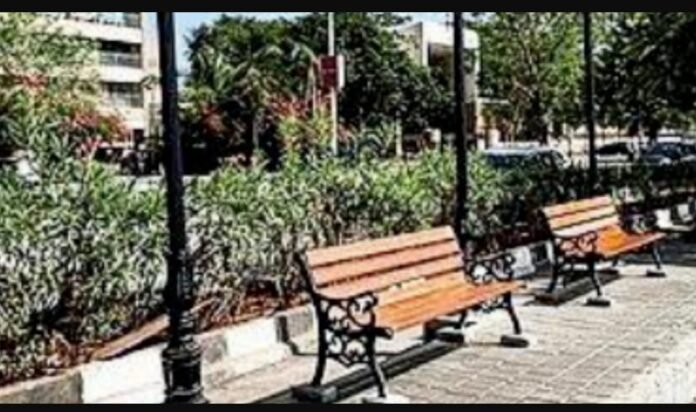In a recent development, a group of concerned residents from South Mumbai has raised objections regarding the seating and lighting design installed near the National Centre for the Performing Arts (NCPA) apartment on the scenic promenade at Nariman Point. The contentious design, aimed at enhancing the aesthetic appeal and functionality of the area, has sparked a debate among locals.
The iconic Nariman Point, known for its breathtaking views of the Arabian Sea, has long been a popular destination for both residents and visitors alike. Recognizing the need to revitalize this prominent public space, authorities had initiated the installation of new seating and lighting infrastructure. However, this endeavor has now encountered opposition from a segment of the local community.
Those opposing the seating and lighting design argue that the changes have altered the character of the area and compromised its natural charm. Some residents express concerns that the newly installed structures clash with the surrounding environment, disrupting the harmony and visual coherence of the space. Moreover, they believe that the design fails to align with the historical significance of Nariman Point and its architectural heritage.
Additionally, critics have raised questions about the functionality and practicality of the seating arrangements. Some residents argue that the new seating lacks ergonomic considerations, causing discomfort for visitors who wish to relax and enjoy the panoramic views. The lighting design has also come under scrutiny, with concerns about excessive brightness or inadequate illumination for evening strolls.
Proponents of the design, on the other hand, emphasize the need for modernization and development to keep pace with the evolving cityscape. They argue that the updated seating and lighting infrastructure would contribute to the overall enhancement of Nariman Point, attracting more people to the area and revitalizing its social ambiance. Advocates contend that the design elements were carefully chosen to blend contemporary aesthetics with the natural beauty of the surroundings, creating a visually appealing and functional space for all.
As the debate unfolds, it is crucial for all stakeholders to engage in constructive dialogue and seek a balanced solution. Local authorities could consider conducting public consultations or engaging with urban planning experts to address the concerns raised by residents while ensuring the preservation of the area’s cultural and historical significance.
The opposition to the seating and lighting design at Nariman Point reflects the passionate engagement of South Mumbai residents in shaping their community’s public spaces. By working together, residents, authorities, and urban planners can strike a harmonious balance between modernization and the preservation of the area’s unique identity, ensuring that Nariman Point remains a cherished destination for years to come.

